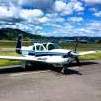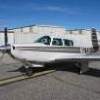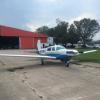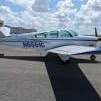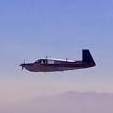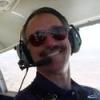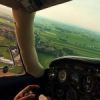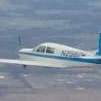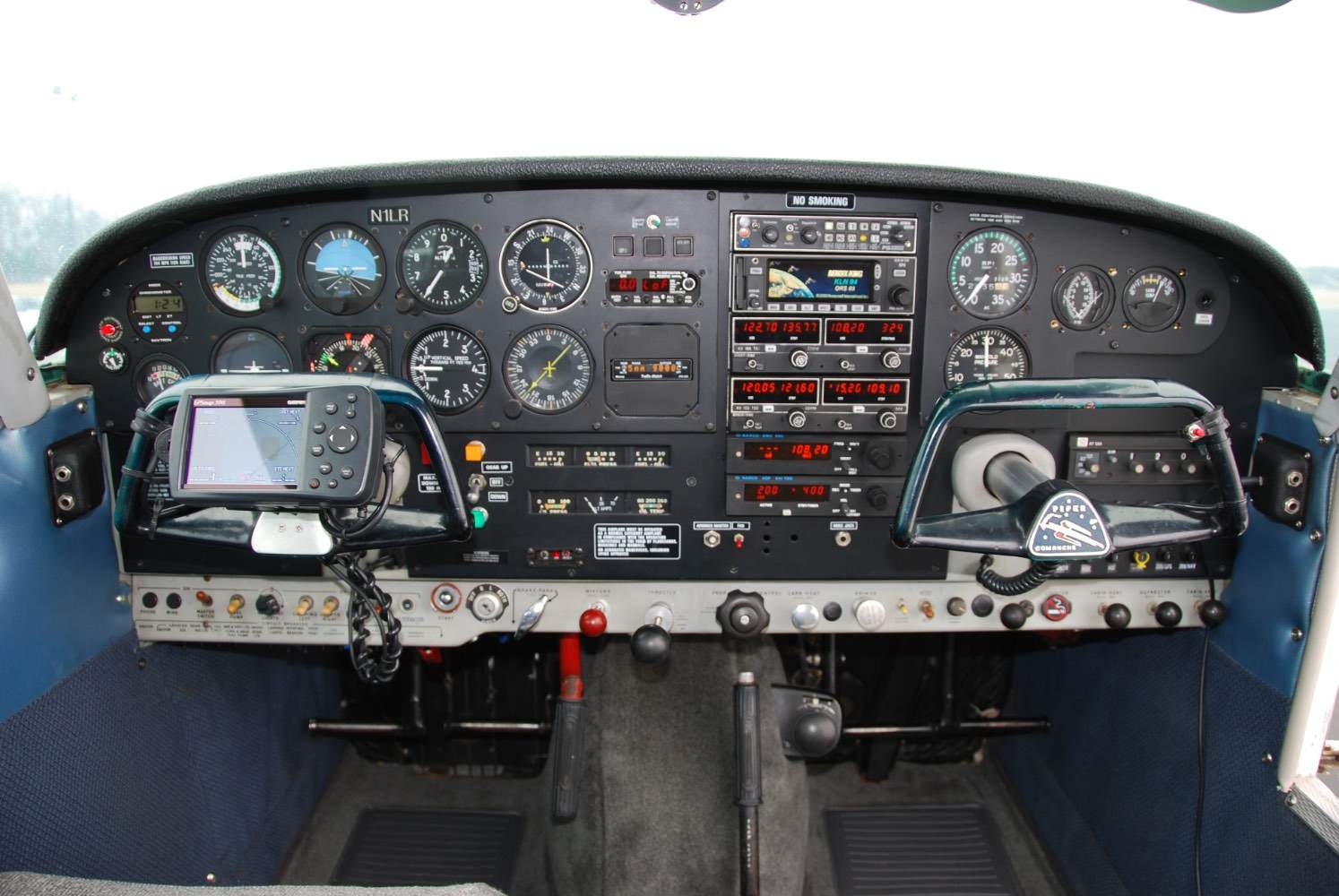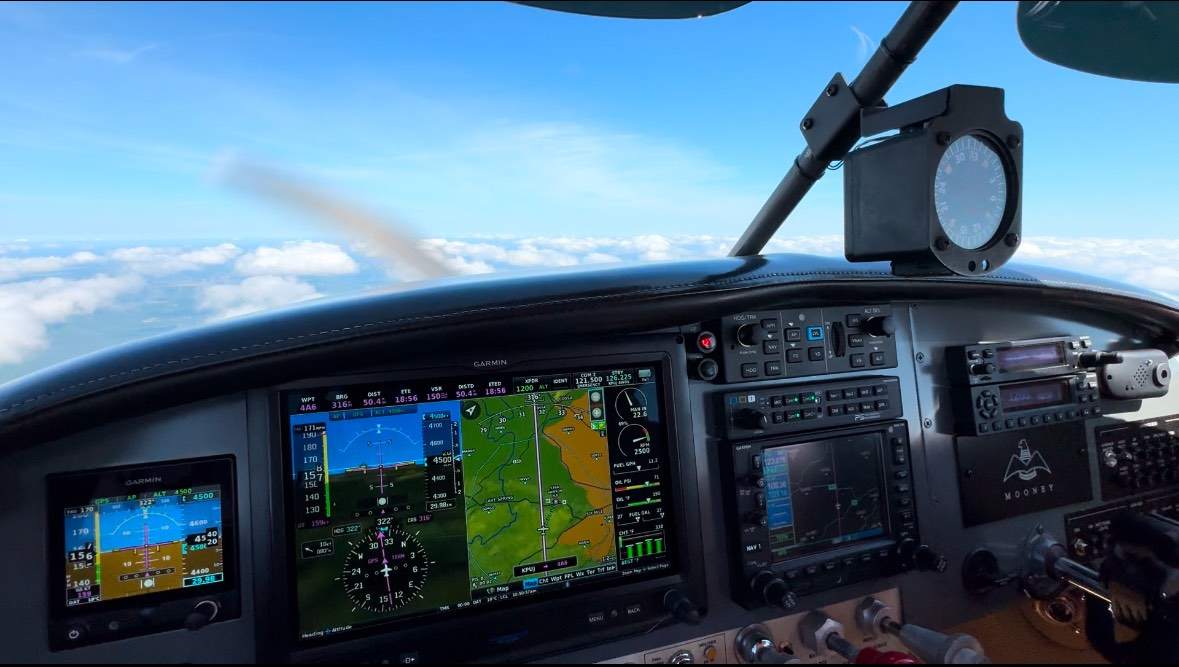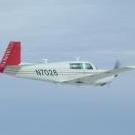Leaderboard
Popular Content
Showing content with the highest reputation on 12/05/2024 in all areas
-
The higher the temperature, the more potential for corrosion, and the more water the air in the engine can hold. Just plug it in a few hours before you go fly otherwise, leave it cold.3 points
-
2 points
-
I’m working on a restoration project so flying it somewhere to be done was not an option. There is also some pride in knowing I did it. But, if you fly regularly and the money is not going to bankrupt you, you might be better off having someone else do it. I suspect they’ll only have the plane for a week or so versus the months it took me working nights and weekends. I spent about $3,000 between the chemicals, tools and all the sealant. I followed the Mooney service manual for resealing. So far this is the hardest part of the restoration project. Sent from my iPhone using Tapatalk2 points
-
The original Gear Override switch in my plane was to the left of the gear lever. I also thought it made sense to put it below and save some lateral space. Yes, the Cygnet switches were placed in the same mount. Now I need to try and fix the R fuel senders. New picture, flying today to Rio de Janeiro (SBRJ). Navigating with the G3X and GFC500 is a breeze!2 points
-
2 points
-
Just go to a truck stop, they usually have a good selection of USB adapters that work on 28V. If you get radio interference, go get a different one.2 points
-
Project Farm did a comparison test of several ceramic coatings:2 points
-
I found some internet research that said Turtle Wax's ceramic coating is pretty much the same as all the stuff they want hundreds of dollars to buy and thousands of dollars to wipe on the plane. Put it on about 3 months ago. It shined the plane up just like all the photos I've seen (paint is 10+ years old but in pretty good condition). Bugs do wipe off easier. We'll see how long it holds up. I'm $36 in. Bought two bottles but it only took one, so I have a spare to do it again. https://www.amazon.com/Turtle-Wax-53409-Solutions-Coating-16/dp/B07XYPS3PS?crid=2753FKS6ZD6W4&dib=eyJ2IjoiMSJ9.Ah3Z4GmyR7Hm2cI8DzZSvtEbPZ-9vlcac2b_laMXPFUlW76Z831BiItp4BdBfu0BeUmsOIBNVxF3rg5T8v2_vqQ10BHtmMz0eXRFiJIvG_zWTCZAL1prkOVDK9c-GRJsaEPJS5zVL4Gh5W9oUfKkKLNomKxaYvFQ9Qg40oD4wxk5MOKdH1JDR6BcjKMNlwSCptLWLZp4OO7Ce2el_tYlZSPNPkvIWPtXPjvd6MD6b8o.y6ItRgyGePNCDgwTOpahtmptjXjpk-sFvnVBMwjylvM&dib_tag=se&keywords=turtle%2Bwax%2Bceramic%2Bspray%2Bcoating&qid=1733398971&sprefix=turtle%2Bwax%2Bceram%2Caps%2C123&sr=8-3&th=12 points
-
Prices are going to vary according to paint condition and products used, so comparisons are probably difficult. Same with painting. I got a quote for a basic paint job for $32K, but what I want is probably going to be more like $40K. I might just have someone buff out the visible parts and see how it looks. If the underlying paint won't buff to a gloss then it's not worth spending a lot on ceramic. The two advantages of ceramic coatings are longevity and extreme water repellency. Wax sits on top of the paint and doesn't last long, but it is easy to apply. "Ceramic" bonds to the paint and lasts longer. The cheap stuff you apply yourself maybe twice as long as wax. The expensive stuff professionals use lasts maybe a couple of years. But, it's expensive: Like 100 bucks a month expensive. So, you have to decide if it's worth it to you. I just spray my airplane with some Turtlewax and buff it with a microfiber towel every month or so. It only takes half an hour and it's cheap. But different people have different standards. I used to live in an apartment and there was a young couple that spent every Sunday detailing their car.2 points
-
....I think it depends mostly on your masochism tolerance for wanton AMU departure at the time2 points
-
This will not affect your rate in any way whatsoever. It has no affect on you financially personally or otherwise.2 points
-
Finally in the air! After solving some quirks after the upgrade, my J is finally flying. Just loving the new panel and especially the GFC500 autopilot. It reaaaaly makes things easier. Next steps for 2025 should be a new GPS, transponder and most likely CiES fuel senders. After a turbulence bump my R fuel sender stopped working (it was working fine in previous test flights).2 points
-
I think the wide variation is whether airplane has TKS and 310 HP upgrade. Supposedly the 3 bladed prop costs a knot and I have heard 7-9 knots for TKS. Based on my experience seems reasonable. My airplane is also slightly out of rig and have an engine approaching high time.1 point
-
What autopilot? Was the autopilot and/or G5 pre-existing? If your autopilot previously followed a heading bug, and the G5 is allowing you to turn on GPSS, then you should be able to put the autopilot in heading mode, activate GPSS on the G5, and sit back while the plane flies the turns for you. Sent from my iPhone using Tapatalk1 point
-
These quotes aren’t the same as a factory reman either… yes those cost more but they have new cylinders and all the “other stuff” is new/oh too (think fuel servo, starter, alternator, etc). The baseline shop oh doesn’t include those.1 point
-
One issue mentioned is you can no longer rely on the keys on the dash for the mags being off. I was discussing this with my avionics shop and we came up with a Mags Off placard, that would be placed on the dash. And part of putting it on the dash, would be to check the switches before you grab it. And check them again once you place the placard.1 point
-
The problem with lubricating them is that the lubricant attracts dust and that gums them up. The best way to fix them is to remove them and take them apart and thoroughly clean them and then don't mess with them. I might try spraying them with contact cleaner which may get out some of the gunk and won't leave an oily residue.1 point
-
And, truck stops can be fun! You never know what you’ll see, hear, or smell there!1 point
-
I've read several threads on here about this task including one from around 2020 where someone was building a recirculating system. I think building something to recirculate the solvent would be easy enough, I probably have everything I'd need to do it in the shop already. The consensus seems to be not to do this yourself but, I'm hard headed and have to experience things for myself. I'm sure it's time consuming and tedious but, it isn't really difficult. I'm pretty good and zoning out and working on mind numbing tasks, like standing at a blast cabinet for 2 - 3 hours. Sometimes it's actually nice. I'm also not a big guy at 5' 6" and 130 pounds so, it should be a little more comfortable for me than it would be for a bigger guy.1 point
-
No way I can afford $5k for that. ‘I did my Bonanza myself, took about 6 hrs, probably not a “professional “ job but still looks great. ‘I used this: https://www.amazon.com/dp/B08CNMTF8M?ref=ppx_yo2ov_dt_b_fed_asin_title&th=1 Be aware though, a little goes a long way. FWIW does help with bug removal and I clean after every flight with : https://www.amazon.com/Meguiars-Hybrid-Ceramic-Detailer-Contaminants/dp/B085751KTJ/ref=sr_1_9?crid=2IDWYJ1PFJNYR&dib=eyJ2IjoiMSJ9.m54Auii6uiWK_KHCL1H-xL2N6BQaN4g2-3RelEaXVJtsi8g0zORi8lBp75AvPueTHxJ148MdRaRWXJNYMtfbWAnVT7mp5OeIsd1jx1_jBlahdCDU9PqGCj7vO58qAzn-xeroV3lKBrFLz87Khv3Knamz0MDH-9pBKV593w-d9TLsoTgDGX9V43OXumX-ug4ExPJiyQ0mViOl8ATLuuY6VKn47-iPFdNHBxqyODSuQ6g3V7_T-HLYDukmyX3YGX325cRSy2Qod-_S-qF8WRt6OQwRQvnNa4Vhmg8S6y4fDX4.J8MzcfT0kIiEzq35paH4nJbCnpami_vSecVpne9ht3w&dib_tag=se&keywords=mcguire+ceramic&qid=1733379798&sprefix=mcguire+cer%2Caps%2C96&sr=8-91 point
-
Exactly. I use tmobile and I can get a hotspot but it’s like 240/yr vs switcheon is only 50. Google fi is nice if you use that carrier…1 point
-
Probably less than the dirt and dead paint that came off, so maybe a net improvement!1 point
-
Yeah, either always warm or just before you fly. Definitely no cycling! I just leave mine freezing (Spokane wa) and turn on (remotely with cell) a ceramic heater on low with a dryer vent stuck to the face. The dryer vent pokes up into the cowl flaps. Dry, warm air for a couple hours and the entire engine compartment is ~70f even on cold days.1 point
-
1 point
-
Ouch! sorry to hear that. I don’t know what model it was but it always comes down to insured hull value. Insurance won’t pay out more than about 70% of hull value for repairs since if they total it the average salvage value is about 30% of hull value that they’ll recoup. Sent from my iPhone using Tapatalk1 point
-
Mike, the older planes needed more gas. Mine is supposed to be accurate down to 1.5 gallons, which is considered unusable. I wouldn't plan to fly with such a low fuel level, but I'm doing the gauge calibration and you only put in small amounts at a time. When the gauge didn't respond, I quit putting in gas. 37.5 gallons per side would be full in my plane.1 point
-
You have to watch the AMUs per departure! My little Mooney has done pretty well by that score--I think I'm over 1000 departures now.1 point
-
IMHO, if the paint is still 'stuck' to the plane you can get decent results with enough work. If it's highly oxidized you are going to be at it a good long while as you'll need to start with a coarse rubbing compound and work your way down to polish; could take three, or more, steps! I've done that in my younger years with ONE car...NEVER again! Certainly not on the surface area of an airplane But, it can be done. IOW, you probably didn't have the right rubbing compound.1 point
-
The 252/Encore option can even exceed 1100 lbs mine is just under 1140 lbs and has everything but FIKI and an awesome panel1 point
-
I say ground ship a box to KCXP a week before you go and cut down your baggage requirements. That will open up a lot of other potential aircraft. For the shorter PNW trips, obviously you'll need less fuel, so more in baggage.1 point
-
Polygone is the product you're looking for. There is a liquid and gel version, and both are helpful from what I read many years ago when I contemplated doing this myself. I took it to Weep-no-more instead and wrote a big check, and don't regret that choice at all. Paul at W-n-M pretty much invented a process using those products along with a recirculating pump and filter system to get most of the sealant out, which minimizes the hand work inside the tank. I figured I might be able to get all of the old stuff out, but I would not know all of the tricks of the trade for putting new sealant down, and that was worth paying the pro to be done with it, versus chasing leaks forever if I missed some little nook or cranny. YMMV, of course!1 point
-
Thanks! That’s pretty much the best I would expect and that really helps me get an idea of what I could gain. Thank you!1 point
-
That Date of Issue is whenever they last sent a physical card. Mine is off by about 40 years. Could be a newly minted pilot, but you can't tell by looking at that date. Crackerjack government IT workers.1 point
-
Agree that turning it on and off daily is a bad idea. However, assuming you have a heater with separate elements for the sump and each cylinder, it's fine to leave it on continuously. Also leave the dipstick unscrewed to let moisture escape. You should be ok as long as you keep the entire engine above the dew point continuously.1 point
-
My airport had high speed internet available and I tapped into that a year ago with 1 gig speed at my hangar. A smart outlet lets me control my plug in heater from my phone. Even better, I put a point to point wi-fi from there to my house, 800’ away. The cable company promised wiring up the house for years, but nada. Get 500-600 speed at the house and said good bye to satellite internet.1 point
-
1 point
-
Go with a cellular solution. Trying to use FBO wifi from across the field is going to be an exercise in frustration..1 point
-
1 point
-
I paid somewhat less than that, and I am glad to have done it. Painting a plane is not only expensive, it involves significant downtime, so putting that off for several years with a touch-up worked very well for me. my paint was generally in good shape, but it was coming off some rivets and edges. If the shop says your paint can be restored, I’d do it. -dan1 point
-
I spoke with Hector recently but he didn't offer much hope. Mine is in pretty poor condition with pieces that attach the headliner near the front windshield broken off. I've had a couple of shops, including Hector, tell me it's too far gone to repair.1 point
-
OK, I talked to my avionics shop. The locking toggle switches are a Honeywell MILSPEC part. Part of the TL series. He says he gets them from Newark Electonics, but DigiKey and some others carry them.1 point
-
This is the right answer. You can’t do this math without driving yourself insane. Get the plane you want, improve it in whatever ways make you happy, and enjoy the ride.1 point
-
Just to post the resolution of this for future searches I sent the unit out to @Jake@BevanAviation and as anticipated there was significant capacitor leak that damaged the board. The unit was able to be repaired and is now back in action functioning normally. Thanks again for all the help.1 point
-
Got a little revenge today on the return flight- Santa Fe to Tuscaloosa (938 NM) non-stop in 5:25. 173 knots average groundspeed at 11,500. Landed with 18 gallons of fuel left in the tanks. Fun! As the plot shows, the further east we traveled, the tailwinds increased. Just before TOD we were up around 195 knots. At the beginning of the cruise descent the groundspeed hit 210 knots. Did not see a single cloud anywhere, all day.1 point
-
Ok, start with this, I acknowledge, mine is a ‘68?F and yours is newer so maybe different… however, my “unsafe” red light means the gear is up correctly. That light is normally on all flight until I put the gear down for landing. Are you saying yours isn’t like that? In mine, if I put the gear up and the alarm went off and the red light came on, that would mean the gear is up properly but the throttle microswitch failed. That would narrow this down very quickly to the throttle switch and that’s very easy to access, adjust, exercise and lube (a little contact cleaner).1 point
-
That’s some nice progress @finnicky7! You’ll be amazed at how heavy all the components of a vacuum system really are, once they are in a cardboard box on a scale. I think you made a great choice with the G5’s. GI-275’s are wonderful instruments that are better suited for multiple-unit installs needing more redundancy options and EIS function, and also have a modern Garmin navigator. You didn’t need to replace that 430 just yet. The S-Tec and G5’s should behave and play nice with each other. Decades ago, I did a complete panel upgrade on a Comanche. I considered it pretty modern and functional, with all that 80’s King / Narco magic. Now, 25 years later, and me returning to the GA universe in an ‘67 E after a 15 year absence, it’s been a steep learning curve to navigate all the changes and advancements in light aircraft avionics.1 point
-
The advantages of a feathering prop are a tradeoff against complexity, and new potential problems. Even if the feathering mechanism was free and weightless, some designers and owners might still choose against having one in a piston single. In a piston prop twin, single engine service ceiling and - more importantly - controllability, are so severely affected by a windmilling prop that feathering capability is a no-brainer even with the complexity and potential problems it brings. But in a single, the only thing you're buying with a feathering prop is a slight improvement in glide range, in the event of a total engine failure that doesn't affect the ability of the propeller to rotate. Note that feathering in a single doesn't help you at all if the engine is still making partial power (often the case, and in that case you want all the thrust you can get); or if it seizes suddenly enough that you don't get it feathered before rotation stops. In exchange for the benefit of feathering in the small number of cases where it actually helps, you get all the failure modes of the feathering hardware . Those include sticking of the anti-feather shutdown pins, such that the engine feathers on shutdown and is hard on the engine and battery on the subsequent restart; as well as the unlikely-but-catastrophic case of accidentally feathering the propeller in flight at full power, which tends to damage the engine. And because it would be very high risk to practice feathering and securing the only engine in a single-engine airplane in flight, you'll never train to do this "in real life", only in a simulator or on the ground. Most of my multi-engine students have a pretty difficult time getting the feather/secure sequence exactly right on their first "real life" attempt, and I suspect the error rate would be even higher amongst pilots of single-engine feathering propellers, who do not hold a multi-engine rating and regularly train the feathering sequence in multi-engine airplanes. I'm not really arguing that a feathering prop in a piston single is a bad idea. Just that it's not the no-brainer it might seem to be at first glance, even setting aside the large cost and small weight penalties.1 point
-
Personally, I like flying the O's under 12K, you really dont gain much higher up. Here is one burning a paultry 12.6 GPH bustin along at 179-180 TAS I flew from College Park to Fort Lauderdale a while back. Horsepower when flying LOP is determined by FF*13.9 in the higher compression non turbo's acc'd to Mike Busch, so if your a nerd for wanting a percent, you can build a chart. ROP, all bets are off, just fly it 100 ROP from first cyl to peak, and you will keep the aluminum stout for more than a few flights.1 point
-
Almost ready! Went to the shop today. The idea was to review all installation and do a thorough runnup and a quick test flight with the mechanic to review the GFC500 autopilot. All avionics working but we had a malfunction with the voltage regulator. Having it checked the next couple of days and see if we can fly the plane Saturday morning. However, we got to spend some time playing with the new screen. The G3X is indeed a very nice piece of equipment.1 point
-
My two cents' worth: Your panel is already nicely-equipped. If it's functionality you're interested in, there's no need to ditch the 430. It's Garmin canbus compatible so it will interface nicely with the FlightStream as well as the G5's and will grab ADS-B data from the transponder so you'll get the ADS-B display on your iPads. I love the FlightStream 210. You can enter flight plans or route changes on your iPad and they will automatically update the 430 as well as the copilot iPad if you have one. (As a practical matter you need to select procedures in the 430 and let them update the iPads rather than the reverse.) I have an M20C as well, and I prefer to have the G5's horizontal rather than vertical. Easier to scan, and it's nice having the HSI and glide path on the right-hand G5 right next to the 430 map. Horizontal placement also makes it MUCH easier to adjust the altitude and heading bugs, and the brightness if need be. The magnetometer for the G5's needs to be at the end of one wing at least a couple of feet from the position light (if it's an LED) to avoid interference. Here's a photo of my panel. It's a "poor man's version of glass" but it's very efficient, easy to scan, and intuitive. I use iPad minis not only because of the size, but because they are brighter. I take them out of the case in hot weather so they don't overheat. The empty space on the right is for a GFC-500 when I can afford it someday. I actually have a 400W (the 430 without the NAV/COM radios) since I already had the two KX-155's and I like not having a single point of failure.1 point

